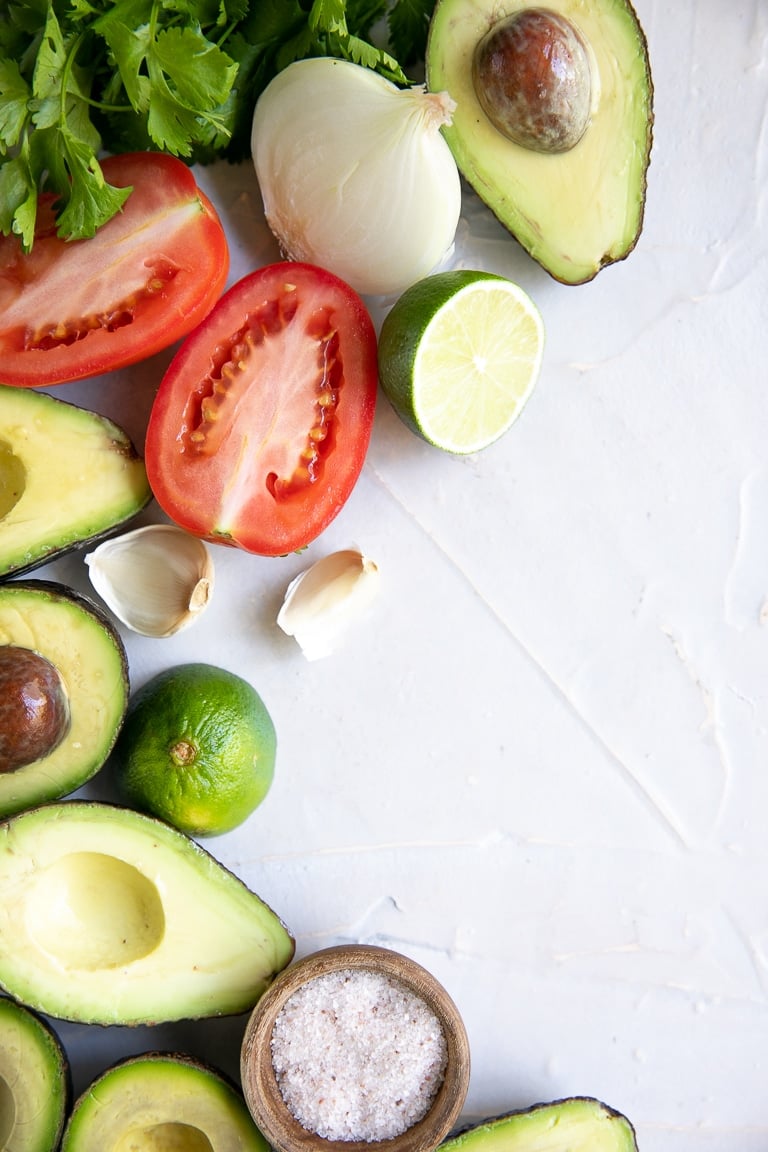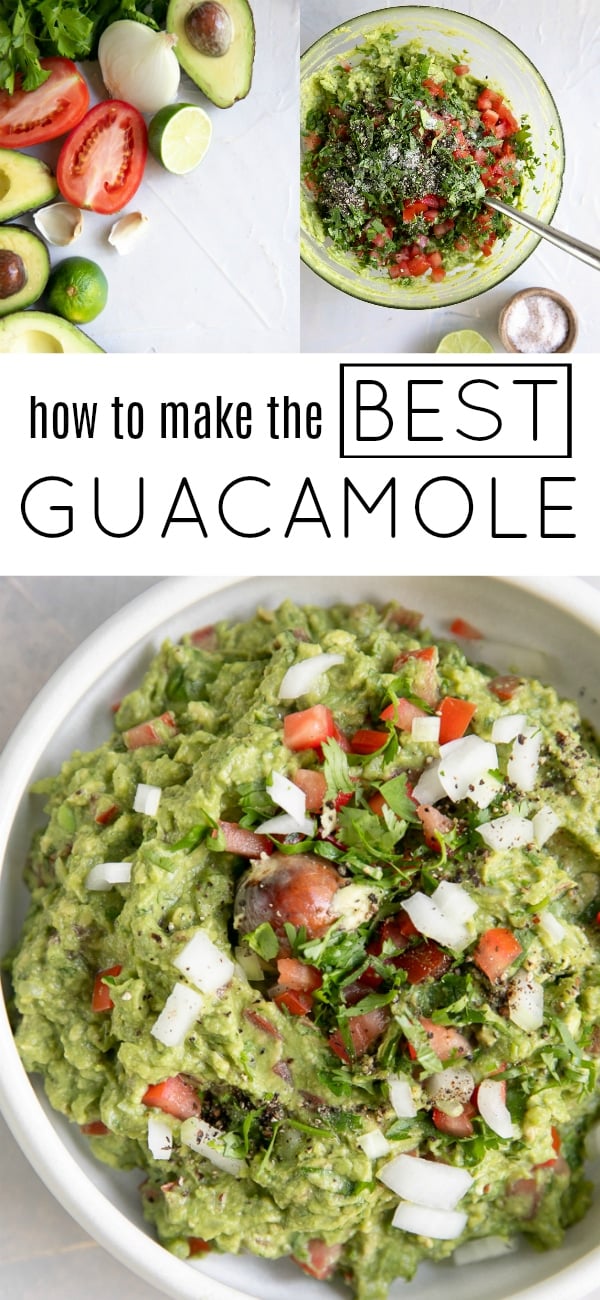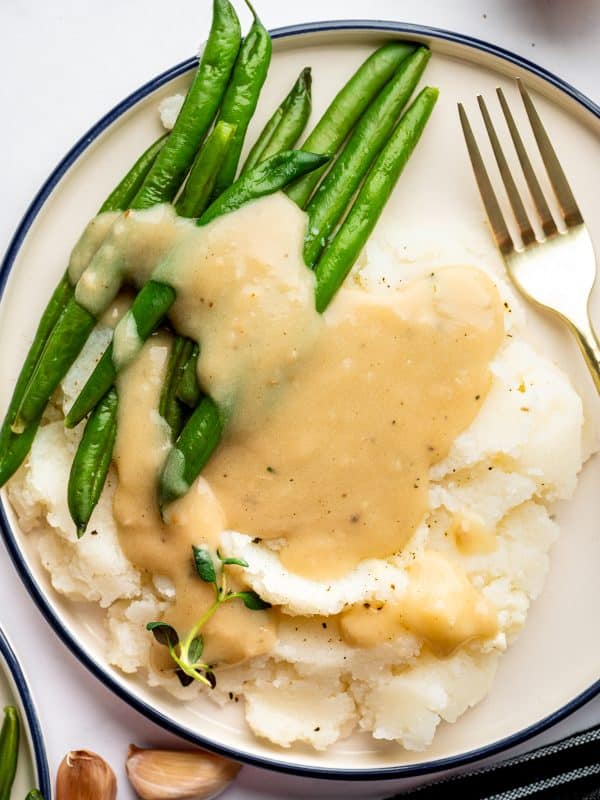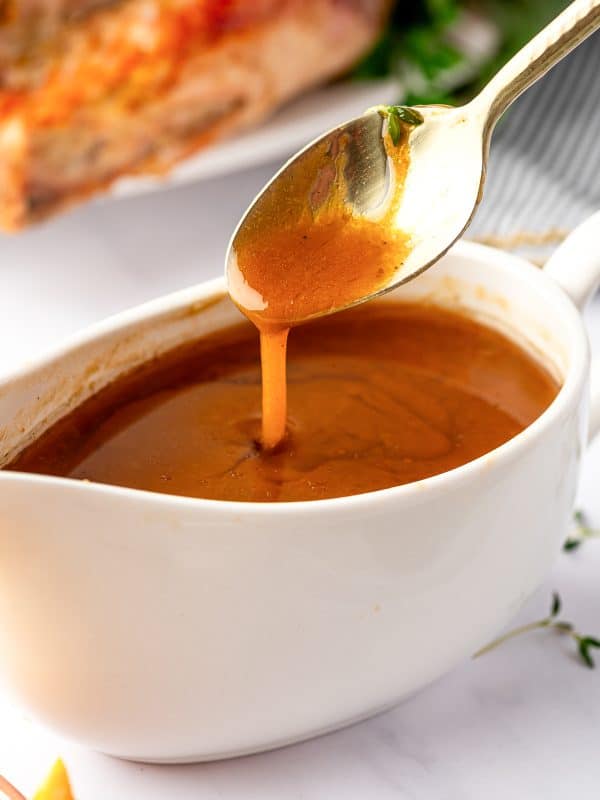This post may contain affiliate links. See my disclosure policy.
To make the Best Guacamole Recipe, you start with fresh, high-quality ingredients like ripe avocado, onion, lime juice, cilantro, and salt. It’s simple to make, delicious, and great with chips, tacos, and more!
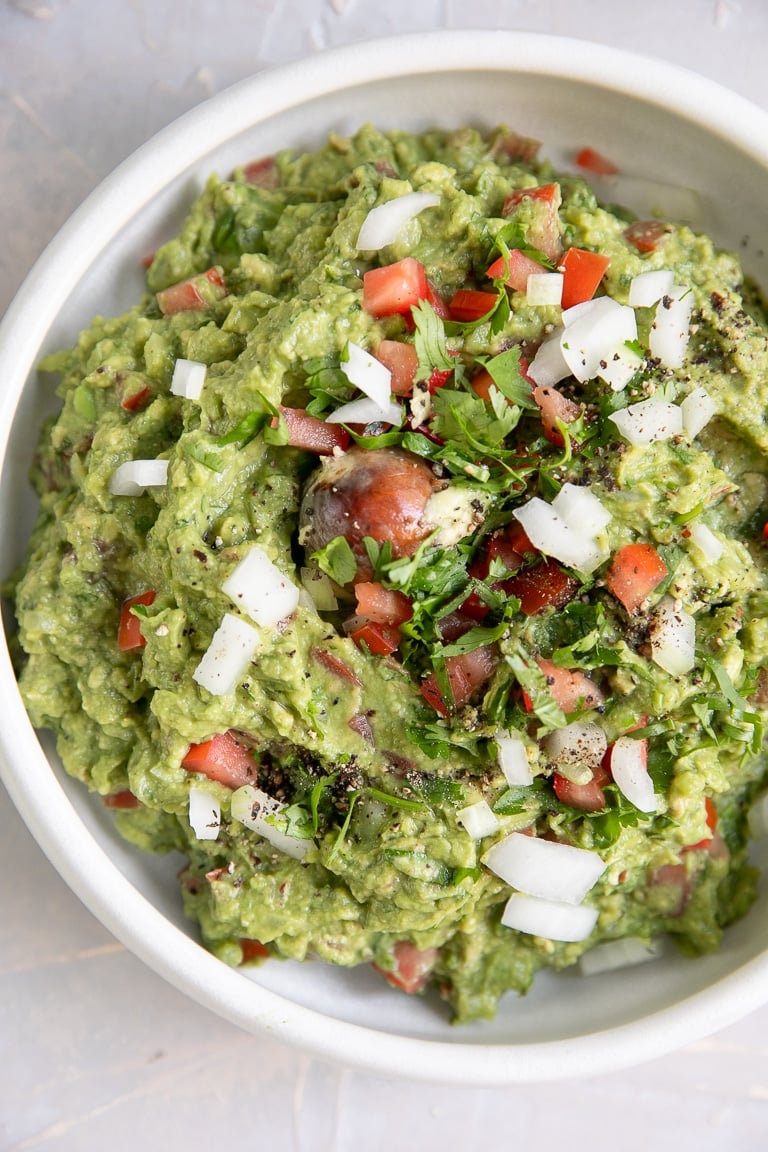
Born and raised in Southern California, guacamole, aka guac, has been a huge part of my existence. Even now, it’s my go-to summer snack and must-have party appetizer. In this post, I’m sharing my all-time favorite (and very best) homemade guacamole recipe, how to make it, and answer all the other guacamole questions you’ve been dying to know.
Guacamole Ingredients
To make this authentic guacamole recipe, you’ll need these simple ingredients:
- Ripe avocados: The best guacamole is made with ripe avocados. If they’re too firm, they won’t mash, and if they’re too ripe, your guac won’t taste fresh. See more buying tips below.
- White onion: Milder than yellow and red onions, white onions are perfect for guacamole since they don’t overwhelm the creamy flavor of the avocado. Red onions are the next best choice.
- Lime juice: Freshly squeezed lime juice is a must. Concentrated bottled lime juice is not recommended.
- Fresh cilantro: A fresh and citrusy staple in authentic guac.
- Fresh garlic: My recipe calls for just one clove of freshly minced garlic. If you do not have any fresh garlic at home, it’s best to just skip it. Garlic powder is not recommended.
- Tomatoes: I love Roma tomatoes as they’re less juicy. No one wants a soggy guac.
- Salt and Pepper: A pinch or two of fresh sea salt is key to helping the flavors pop! Add as much (or as little) as you’d like. Black pepper is optional.

Choosing Ripe Avocados for the Best Guacamole
The best guacamole starts with ripe, yet firm avocados. Here’s what to look (and feel) for when selecting avocados from the grocery store:
First, look for avocados that still have the little nubby stem attached. Pick one up and place it in the palm of your hand. Squeeze it gently with your thumb. If it’s ripe, it will give ever so slightly to the pressure without feeling mushy. Pick up a few more. In no time, you’ll notice a difference between a rock-hard avocado, an overly-ripe avocado, and one that feels just right. Finally, check for soft spots, dents, or mold around the stem. Any of the following, and the fruit is likely overripe or spoiled.
My final tip, and especially if you plan to make a big batch of guacamole, is to purchase slightly under-ripe avocados a couple of days ahead of time. Set them out on the kitchen counter until they are just ripe, then transfer them to the refrigerator until you’re ready to use them! It’s my go-to, fool-proof method for getting perfectly ripe avocados every time!
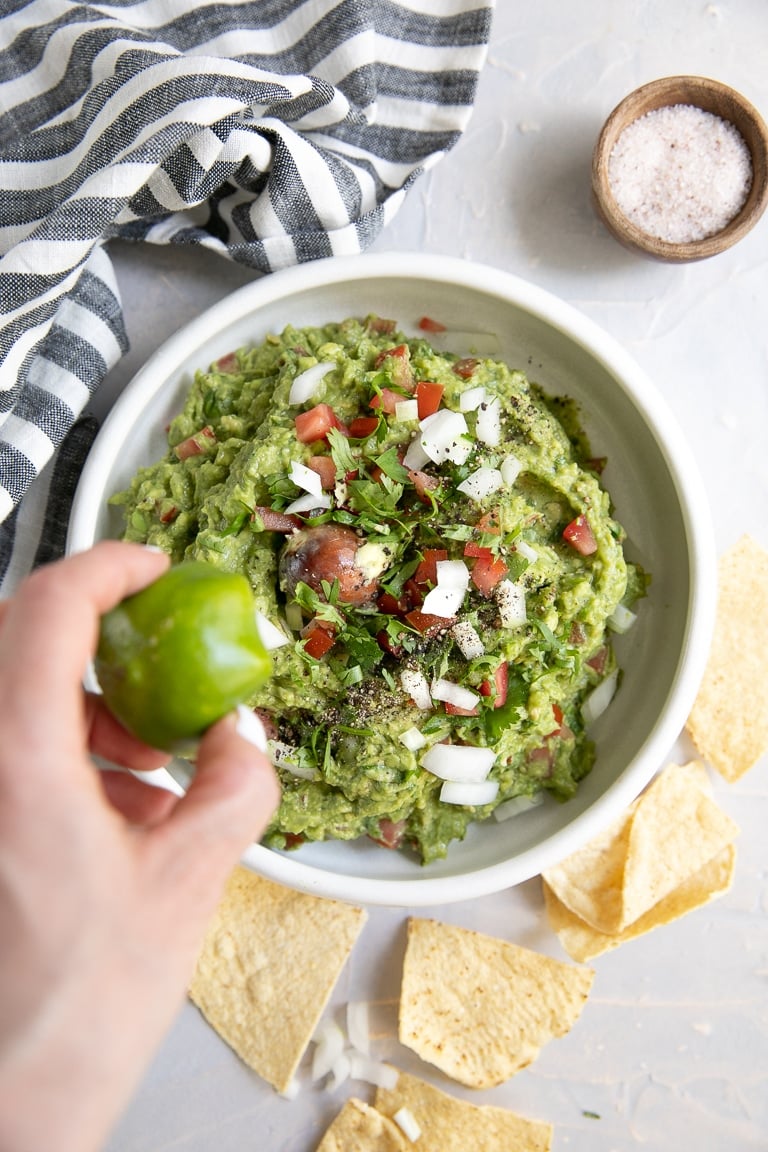
How to Make Guacamole
For the full list of ingredients and access to the printable recipe card click here.
Start by slicing your avocados in half and carefully removing the pits. Use a spoon to scoop the flesh into a medium mixing bowl and immediately add the fresh lime juice and a generous pinch of salt.
Now comes the question, what is the best way to mash avocados for guacamole? Traditional cooks will likely use a stone molcajete (a type of mortar and pestle used in traditional Mexican cooking) to pound and scrape their guac into perfectly textured and flavorful submission. Since most of us don’t have large-capacity mortar and pestle just lying around, the next best option is either a fork, potato masher, or sturdy metal whisk. I’ll usually just grab a fork. Less exciting, but highly effective at molding my guacamole into a dip that is rustic and chunky or smooth and creamy.
Once the avocados have been mashed, fold in the diced white onion, Roma tomatoes, minced garlic, chopped cilantro, and fresh pepper. Taste and adjust the seasoning as needed, adding more salt or lime juice to brighten things up and help the flavors pop.
Flavor Boosting Tip: To get the most flavor from the onions, I highly recommend mashing some or all of them up with a little lime juice before adding them to the avocado. Think of it like a flavor pre-release. You can use a mortar and pestle or a few quick pulses in a small food processor. I’m not suggesting that you mash them into puree. Just enough to break down their structure and release their juices.
How to Add Variety to Classic Guacamole
Guacamole is incredibly versatile, so don’t be afraid to get creative! While this recipe keeps things classic, you can easily customize it with a variety of fun and flavorful add-ins:
- Sweet: Pomegranate arils and fresh mango are my two faves, but pineapple and peaches are also delicious.
- Crunchy: Stir in finely chopped bell peppers or jicama. Both add texture without overpowering the classic guacamole flavor.
- Spicy: Add finely chopped jalapeño or serrano pepper, starting with a small amount and tasting as you go. Removing the seeds will tone down the heat, while leaving them in adds extra kick.
- Cheesy: Crumbled queso fresco, tangy feta, or even soft mozzarella-style cheese for delicious, creamy contrast.
- Creamy: While traditional recipes don’t include dairy, a spoonful of Greek yogurt, sour cream, or even cream cheese can make it ultra creamy. This variation is especially great if you plan to use it as a spread for sandwiches or using as a dip for spicy dishes like chicken flautas or chipotle shrimp.


How to Serve Guacamole
My favorite way to serve this fresh guacamole recipe is scooped onto crunchy tortilla chips. If I’m hosting a party, I like to offer margaritas to drink and additional salsas like pico de gallo or homemade salsa. It’s the perfect crowd-pleasing appetizer!
This easy guacamole recipe is also fantastic with all your favorite Mexican-inspired meals! Spoon it over these sheet pan shrimp fajitas and enjoy with simple side dishes like cilantro lime rice and Mexican black beans.
Serving Tip: Serve your guacamole at room temperature. Cold guacamole will have duller flavor. Fix this by making your guacamole with room temperature avocados, or let your prepared guac sit at room temperature for 10–15 minutes before serving to bring out the best taste and texture.
How to Prevent Guacamole From Browning
Avocado and oxygen have one of the craziest love-hate relationships in existence. Avocados need oxygen to grow, but the moment it’s cut open and exposed to air, it starts to oxidize and turn brown. So, How do we keep avocados from turning brown?
Prevent contact with oxygen. The best way to do this is with water. Here’s how:
Transfer you leftover guacamole to an airtight container or jar. Pour a thin layer of cold water (about ½ inch) directly over the surface of the guacamole, making sure the top is completely covered. Since guacamole is dense, the water won’t seep through. Seal the container and refrigerate for up to 3 days. When ready to serve, pour off the water, stir, and enjoy.
Alternative solutions that do not work (trust me, I’ve tried them):
- Avocado pits. Big fat no. Yes, I added it to the bowl here for decoration, but it in no way do the pits help keep guac green.
- More lime juice. Another no. Sure, it helps maintain freshness for a bit longer, but a day…two days? Not in my experience.
- Plastic wrap barrier. Works for short-term storage, maybe a day.
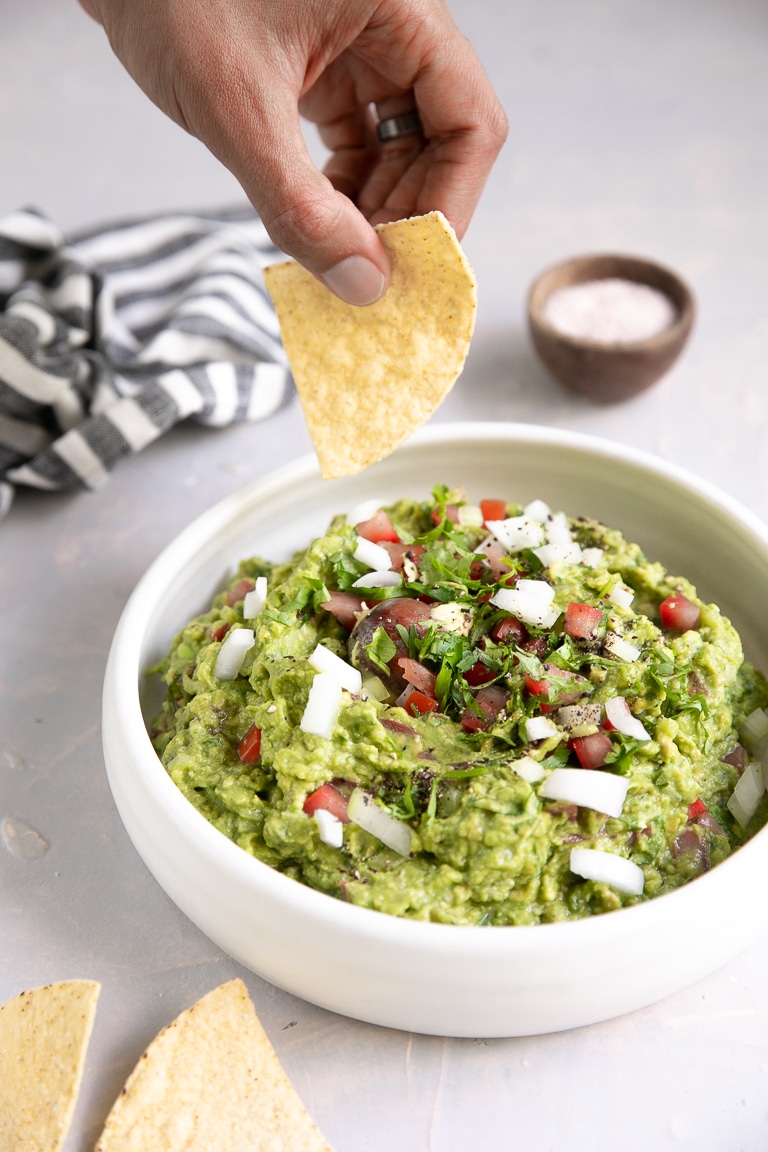
Looking for more delicious Mexican Recipes? Check out my full collection of 40+ Best Mexican Recipes Perfect for Cinco de Mayo.
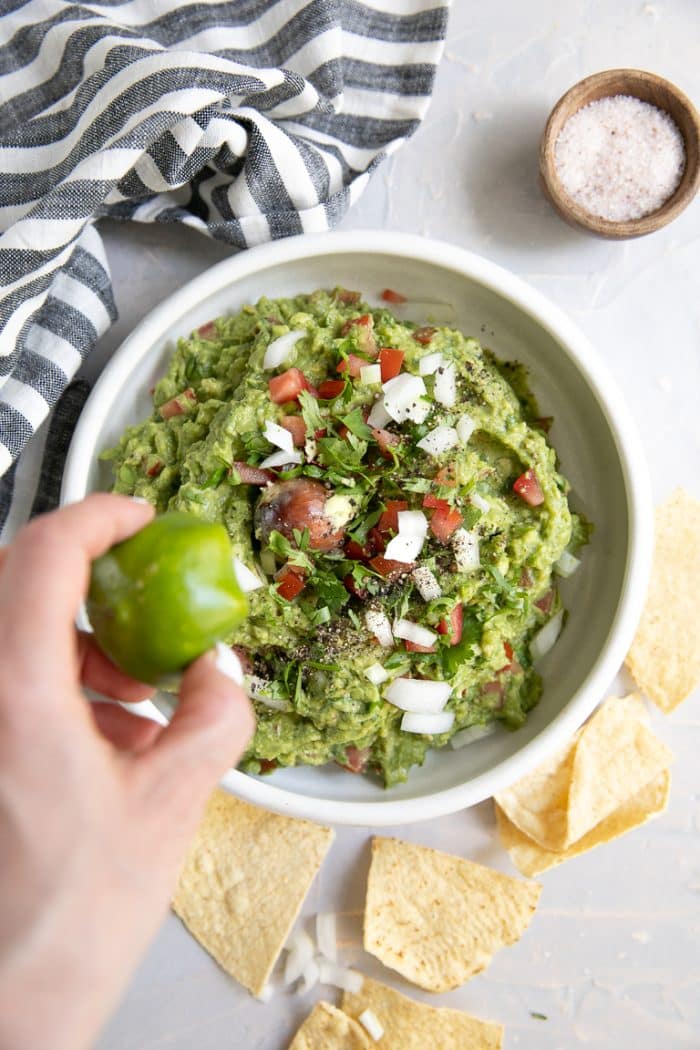
Guacamole Recipe (Fresh, Easy & Authentic)
Ingredients
- 5 large avocados, peeled, pitted, and mashed
- 2 limes, juiced
- 1 teaspoon salt, plus more to taste
- ½ cup white onion, finely diced
- 2 Roma tomatoes, seeded and diced
- 1 clove fresh garlic, minced, optional
- ¼ cup fresh cilantro, chopped
- ½ teaspoon freshly ground black pepper
Instructions
- In a medium mixing bowl use a fork to mash together the avocado with the lime juice and salt until desired consistency is reached (smooth versus chunky).
- Mix in the diced onion, tomatoes, garlic, cilantro, and fresh ground black pepper. Stir to combine and season with additional salt, pepper, and lime juice, to taste.
Notes
Nutrition
Nutrition information is automatically calculated, so should only be used as an approximation.
Frequently Asked Questions
Frozen guacamole can be okay. After thawing, it tends to be more watery or grainy, and any added ingredients like tomatoes or onions can turn mushy or bland. For best results, only freeze smooth guacamole without watery add-ins (like tomatoes). Press a sheet of plastic wrap directly against the surface, and freeze it in an airtight storage container. Thaw overnight in the fridge, stir well, and add a fresh squeeze of lime and salt before serving.
Yes, lemon juice works in a pinch and still helps prevent browning. However, for traditional, tangy flavor, I definitely recommend sticking with fresh lime juice.
